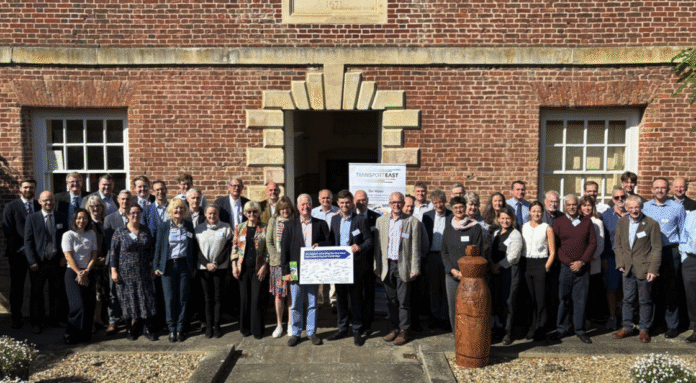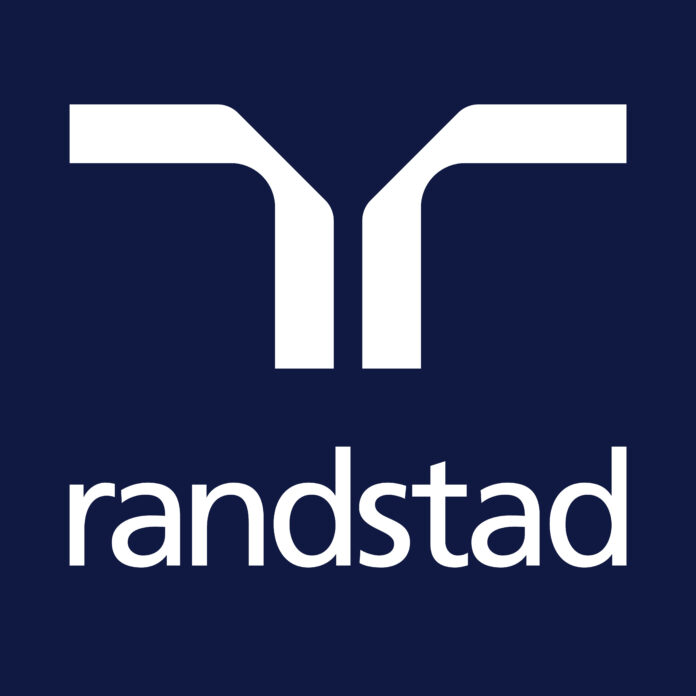A new report by Transport East, prepared on behalf of the East West Rail Eastern Section Board, has revealed compelling evidence that extending the East West Rail (EWR) scheme beyond Cambridge to Norfolk, Suffolk, and North Essex could transform the East of England’s economy. The report, “East West Rail – East: The Case for Investment in the Eastern Section of the East West Railway,” sets out the strategic, economic, and social benefits of a rail investment that would connect one of the UK’s most dynamic yet under-connected regions.
A Region of National Importance
The East of England is an economic powerhouse, contributing £163 billion in Gross Value Added (GVA) and home to 3.2 million jobs and 270,000 businesses. It hosts some of the UK’s most important assets: Cambridge’s world-class innovation ecosystem, the global trade hubs of Felixstowe and Harwich, Stansted Airport, and a burgeoning clean energy sector stretching across the Norfolk and Suffolk coasts.
Yet, the report makes clear that underinvestment in east–west transport links is holding the region back. While London-facing routes have received significant attention, cross-country rail services connecting the East’s towns, ports, and research centres remain slow and infrequent. Currently, passengers arriving at Cambridge may wait up to an hour for onward trains to Norwich, Ipswich, or Stansted – a bottleneck that restricts growth and disincentivises sustainable travel.
The Vision: Extending East West Rail
East West Rail is already set to connect Oxford and Cambridge by the mid-2030s, unlocking new connectivity between two globally significant university cities. The report argues that this investment should be leveraged by planning now for its extension eastwards—to link Cambridge with Norwich, Ipswich, and Colchester, and onward to the ports and energy hubs that power the national economy.
The case is simple: rail connectivity is the missing link in unlocking the East’s full potential. Enhanced east–west rail services would:
- Boost productivity by connecting research, technology, and manufacturing hubs along the Cambridge–Norwich Tech Corridor.
- Support sustainable housing and jobs growth, linking new developments with employment opportunities.
- Shift freight from roads to rail, reducing congestion and emissions.
- Enhance access to ports, airports, and freeports, supporting national trade and clean energy ambitions.
The Economic Corridors of the Future
Norfolk: A Hub of Innovation and Clean Energy
Norfolk’s economy blends urban innovation with rural enterprise, anchored by Norwich Research Park, one of Europe’s largest life sciences campuses. The Cambridge–Norwich Tech Corridor is forecast to deliver 70,000 new jobs and £7 billion in annual GVA by 2031, but poor rail connectivity is constraining its potential. Norwich to Cambridge services are currently infrequent and slow, limiting access between two of the UK’s fastest-growing cities.
Norfolk’s growing offshore wind and renewable energy industries further strengthen the case for investment. Improved rail could connect these energy clusters to research centres and manufacturing bases, facilitating clean growth.
Suffolk: The UK’s Gateway for Trade and Energy
Suffolk’s £21 billion economy hosts BT’s Adastral Park and the University of Suffolk’s DigiTech Centre, alongside the UK’s largest container port at Felixstowe. With over 4 million containers handled annually, the port’s success depends on reliable rail freight connections – yet capacity constraints at Ely and Haughley hinder growth.
The Freeport East initiative, spanning Felixstowe, Harwich, and Stowmarket, could deliver 1,800 jobs and £250 million in private investment, but its success relies on improved rail capacity. The report highlights that investments in the Ely and Haughley junctions are critical to enabling both passenger and freight growth, while easing road congestion along the A14.
Suffolk also plays host to Sizewell C and numerous renewable projects – all demanding efficient, sustainable transport to move workers, materials, and goods.
North Essex: Global Gateways and Growing Towns
North Essex is home to Stansted Airport, set to grow to over 50 million passengers annually, and Freeport Harwich, a green energy hub expected to deliver 5,000 jobs. Yet, rail links connecting these assets to Cambridge and beyond remain weak. Colchester, for instance, has no direct service to Cambridge despite being a growing university and technology hub. Strengthening these east–west routes would open new opportunities for businesses and communities across Essex.
Cambridge: The Heart of a Growing Region
Cambridge remains one of the world’s leading innovation centres, but its infrastructure is under severe pressure. The city’s housing costs, congestion, and limited transport capacity threaten its ability to sustain growth. The report calls for better eastern connectivity, including a potential Cambridge East station, to improve access for workers and businesses. Extending EWR eastwards would ease pressure on the city, spread economic benefits across the wider region, and support the government’s vision for the Oxford–Cambridge Growth Corridor.
Freight, Sustainability, and Balanced Growth
Freight plays a central role in the East’s economy, with up to 76 rail freight movements per day saving over 100 million HGV miles annually. However, capacity limitations—particularly around Ely and Haughley—restrict further expansion. Investment here could unlock additional freight paths, connect Freeport East more efficiently to the Midlands and North, and cut carbon emissions.
The report also highlights the importance of sustainability. By shifting both passengers and freight to rail, the East can support the UK’s net-zero goals while enhancing mobility for growing communities. Integrating rail with buses, cycling, and demand-responsive transport will ensure that investment delivers wider social and environmental benefits.
Stakeholder Support and Next Steps
The report’s launch in Newmarket on 19 September drew strong support from across the region. Cllr Alexander Nicoll, Chair of the East West Rail Eastern Section Board, said:
“This report makes a compelling case for why better rail links across the East are essential for our future. Connecting our communities to jobs, education and new opportunities – while supporting sustainable growth – is at the heart of what we want to achieve.
“We have a real opportunity now, while work is progressing on bringing East West Rail to Cambridge, to make the rail infrastructure improvements needed to maximise the value of government’s committed investment. These improvements aim to extend the benefits of more frequent, reliable and faster train services to communities and businesses across the East.
“The enthusiasm at today’s event shows the strength of partnership across business, local authorities and transport bodies and we ask government to support us to deliver this vision.”
Cllr Cliff Waterman, Leader of West Suffolk Council, echoed this:
“Suffolk contributes £21 billion to the economy, is home to the UK’s largest container port at Felixstowe, new energy projects like Sizewell C and an internationally renowned equine centre in Newmarket – the county is central to national growth ambitions. Collectively, this builds a strong case for extending the East West Rail scheme beyond Cambridge.
“Extending East West Rail through West Suffolk towards Ipswich and Norwich would sustainably connect people in planned new housing developments with jobs, services and the growing opportunities across the East. Improving quality of life and opening chances for everyone.”
The message from businesses is equally clear. Amy Griffiths, representing the Norfolk Business Board, said:
“Norfolk is a powerhouse of innovation and enterprise, from Norwich’s thriving financial, creative and life sciences sectors to the fast-growing Cambridge–Norwich Tech Corridor, which is set to create thousands of jobs and drive £7 billion in annual GVA by 2031.
This future economy needs the infrastructure support to allow our talented people to access these new opportunities and to spread the benefits across our communities.
“Strengthening rail links between Norwich, Cambridge and the wider East West Rail network is vital to unlocking this growth, attracting further investment, improving productivity and sustainably connecting communities.”
Jonathan Denby, Head of Corporate Affairs, Greater Anglia said: “Evidence from evolving passenger demand across our network shows that where you improve train service frequency and service quality, more people choose to travel by rail. We’ve seen that with trends not just on busy routes like the Norwich to London intercity line and the Stansted Express, but on regional routes such as Norwich to Sheringham and Ipswich to Lowestoft. The combination of new trains, good performance and better frequency, means rail travel in the East is thriving and the prospects for the future are good.
We are therefore committed to working with partners across the region to make the case for the pipeline of infrastructure improvements needed to allow more services to run between Cambridge and Ipswich, Norwich and north Essex, with all the benefits that would bring for customers and communities.”
The East of England powers, feeds, and supplies the UK – yet its economic arteries remain underdeveloped. The East West Rail – East report provides a robust, evidence-based case that strategic rail investment can unlock vast potential in this high-performing region.
By acting now, government and regional partners can ensure that East West Rail becomes a truly coast-to-coast main line, connecting communities from Oxford to the East Coast – and delivering the sustainable, balanced growth the nation needs.





